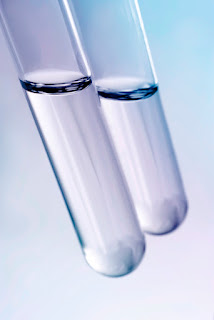Water in its pure state does not conduct electricity. It almost always does, however, because of the many conductor elements and molecules that exist as solutes in the liquid. In any source of water throughout the world there are a variety of ions, coming from nearby geologic features. Drinking water contains some of these ions as well. They are often added to the water supply for improved quality, ensuring the health of the public. A compound found in some natural water and public drinking sources is fluoride. Since this is naturally toxic to consume above a certain amount, it is necessary that it can be measured and monitored. ISO 10359-1:1992: Water quality - Determination of fluoride - Part 1: Electrochemical probe method for potable and lightly polluted waterprovides a technique for measuring fluoride content in potable and surface waters.
The main advantage of low-level fluoride intake is prevention of cavities in the teeth. This is why it is placed in the water supply in several different countries, being found in 74.6% of the drinking water in the United States. The standard allows for measurement of an amount of water that can have dental benefits by setting the minimum measurement of fluoride in the water at 0.2 mg/L, which is low enough to detect the amount generally placed in the water supply for safe consumption, 0.4 mg/L. Despite the fact that low – level exposure to fluoride can help protect teeth, a slightly greater amount can cause the teeth to form brown spots and noticeable pits. This is a cosmetic condition known as dental fluorosis. It often occurs from the improper use of dental products, such as toothpaste or mouthwash, and would not necessarily be an issue with water quality.
 Fluorosis can also be much more extreme, affecting the body. Skeletal fluorosis comes from chronic high-level exposure to fluoride. This is very uncommon and causes calcification of bone joints and ligaments, which can lead to disfigurement and even death. However, it is more common for people to have chronic moderate-level exposure to fluoride. Symptoms of this include abdominal pain and nausea. This is derived from pollution of the water supply, along with exposure to fluoride through other means, such as food. ISO 10359-1:1992 monitors the potential for fluorosis by measuring up to 2 g/L in the water. The possibility for moderate-level exposure can be understood through this, since it begins to occur at amounts higher than 1.5 mg/L.
Fluorosis can also be much more extreme, affecting the body. Skeletal fluorosis comes from chronic high-level exposure to fluoride. This is very uncommon and causes calcification of bone joints and ligaments, which can lead to disfigurement and even death. However, it is more common for people to have chronic moderate-level exposure to fluoride. Symptoms of this include abdominal pain and nausea. This is derived from pollution of the water supply, along with exposure to fluoride through other means, such as food. ISO 10359-1:1992 monitors the potential for fluorosis by measuring up to 2 g/L in the water. The possibility for moderate-level exposure can be understood through this, since it begins to occur at amounts higher than 1.5 mg/L.ISO 10359-1:1992 recommends measuring fluoride in water by introducing a fluoride ion-selective electrode into the liquid. This should be performed in a 100 mL propylene jar. It is ideal that all test aliquots are buffered to a pH between 5 and 7 to prevent acidic conditions that can lead to the formation of hydrogen fluoride, which reduces the measured fluoride concentration. According to the standard, the principle behind the electrode test is that “when a fluoride ion-selective electrode comes into contact with an aqueous solution containing fluoride ions, a potential difference develops between the measuring electrode and the reference electrode”. This amount can be calculated using the Nernst equation to understand the concentration of fluoride in the tested water. Instructions for carrying out the test and its calculations are in the standard.